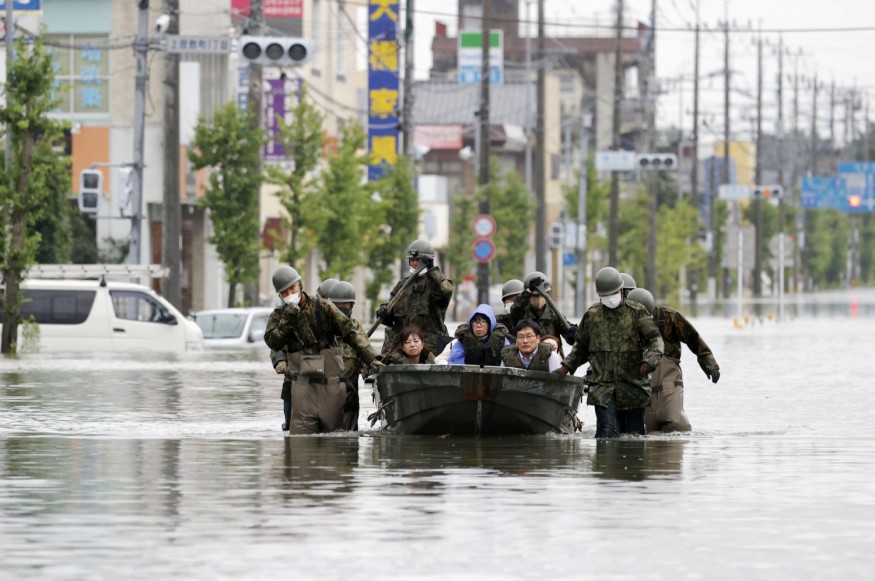

The heavy rains since Saturday have caused river banks to swell, leading to flash floods and landslides in southern Japan, claiming the lives of almost 60 people. The death toll is still expected to rise as search and rescue operation continues. Some 3.6 million people across the country were ordered to evacuate their homes and relocate to safer places.
Among the reported deaths are14 residents of a nursing home located near Kuma River in Kumamoto. The river rose abruptly, causing the embankment to give in. Floodwaters flowed into the nursing home where most residents were bedridden or are bounded in wheelchairs. A caregiver of the facility said he saw the river rise early morning of Saturday. He and his three colleagues woke everyone up for evacuation. However, the flood broke the window, and the water was pouring in quickly. The water rose suddenly like a tsunami, Shunji Ogawa, a village assemblyman said.
The heavy rainfall that started in southern Japan is now pounding central Japan, prompting authorities to issue a warning for Gifu and Nagano prefectures.
According to the Japan Meteorological Agency, Kuma Village in Kumamoto prefecture recorded 83.5 millimeters of rainfall in one hour on Saturday morning, and authorities claim it to be record-breaking. Kanoya City in Kagoshima had 109mm in an hour on Monday, making it its highest rainfall record so far. Hitoyoshi City reported 100 millimeters (4 inches) per hour of rainfall at the height of the rain the past days. Then the city was also severely hit by flooding.
Prime Minister Shinzo Abe said he would increase the number of soldiers deployed to do the search and rescue operations to 80,000, as Yutaro Hamasaki, an official of Kumamoto, admitted that they are racing against time. "We need to speed up our search as time is running out, " he said.
In Kumamoto prefecture, the hardest-hit area, non-stop rains, landslide, and flooding have complicated the rescue operations. Thousands of rescue workers have been mobilized to comb through muds and debris in towns along the Kuma River.
In some areas, bridges were swept away by floods, and roads are inundated, making raft and helicopter the only means of transportation.
Heavy warnings in some areas in Kumamoto and Kagoshima are still on as of Tuesday, and more flooding and landslides are expected.
As of Monday, Chief Cabinet Secretary Yoshihide Suga reported that more than 800 had been rescued so far.
The rains, floods, and landslides isolated hundreds of communities located in highly-mountainous areas. Thousands of households have been isolated. Firefighters numbering to around 20,000, 28 helicopters, four planes, and two search ships are currently deployed to search and rescue them.
Authorities warn that the rain is expected to continue until Wednesday.
Despite the advice of authorities to move to safer places, some people prefer to sleep in their cars instead of shelters so as not to risk contracting the coronavirus.
Authorities admit that the recent pandemic has complicated the evacuation efforts.
The president of the Japan Association of Infectious Diseases, Kazuhiro Tateda, said that the fears of affected residents are sound.
He said that people living in these emergency facilities will have to live close to each other and for long periods, posing a big problem. However, he said that the good news is, they have not seen a large number of coronavirus cases, unlike the situation in Tokyo. Tateda is also a member of the committee created by the government to curb the spread of the coronavirus.
© 2025 NatureWorldNews.com All rights reserved. Do not reproduce without permission.





